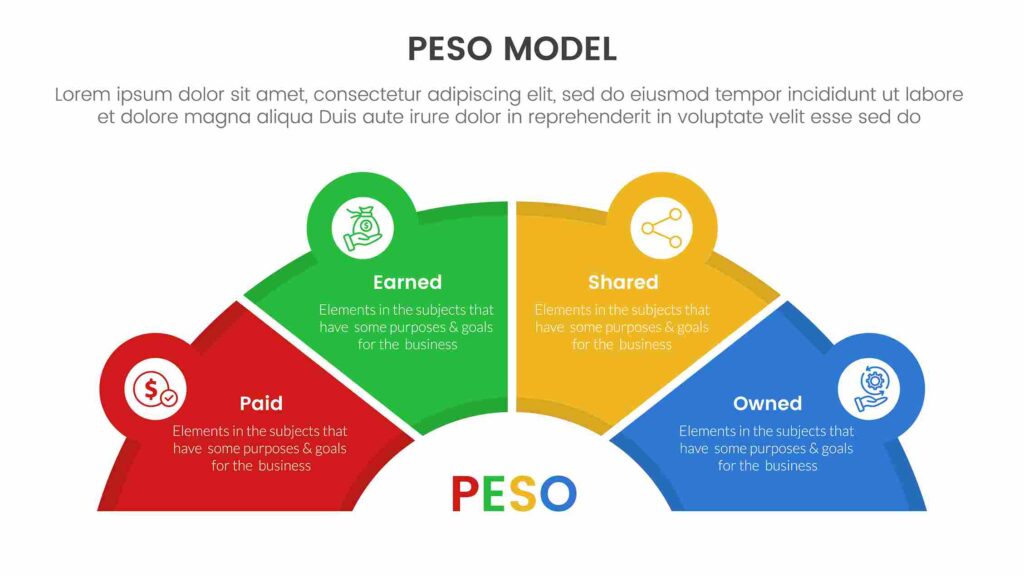- Home
The Paid, Owned, Earned, Shared Media strategy (PESO Model) provides a broader view of the marketing landscape, offering simplicity, convenience, and greater efficiency in brand promotion. In this article, we’ll explore the PESO Model in depth to help you implement it effectively for your business.
Table of Contents
Toggle
The PESO Model is a strategic framework that categorizes media into four types—Paid, Earned, Shared, and Owned. These media channels, when used in synergy, help brands boost visibility, craft clear messaging, and drive better marketing performance.
Paid Media refers to promotional channels that require payment to reach an audience, including both online and offline methods. Examples include TV commercials, newspapers, display banners, Facebook Ads, and Google Ads.
Although often expensive, Paid Media offers rapid reach. With careful budgeting and campaign planning, it can be highly cost-effective and impactful.
Owned Media includes channels that a brand fully controls, such as its Facebook Page, social profiles, and official website. Brands use these channels to share updates, promotional content, and important information.
This type of media builds credibility. When potential customers find your official content, they’re more likely to trust and follow your brand—provided the information is clear, reliable, and complete.
Earned Media is exposure gained through word-of-mouth or organic mentions. It includes customer referrals, media coverage, or influencer recommendations—often driven by positive brand experiences.
This media type reflects the power of quality. A product that exceeds expectations encourages people to share, recommend, and generate buzz—amplifying reach without added cost.
Shared Media involves content circulated through user participation—like contests, shared reviews, or reposts. For instance, customers might share their experiences online in exchange for rewards or recognition, generating organic engagement.

To apply the PESO Model effectively, consider these best practices:
While the PESO strategy recommends combining all four media types for best results, it’s not mandatory. Depending on the product and content format, one or two channels may work best. Choose what aligns with your goals and audience.
Key Performance Indicators (KPIs) are essential for measuring success. KPIs should be tied to the specific objectives of each media type.
For instance, if your goal is to educate teens aged 15–19 about a product via a short influencer video on TikTok, your KPI might focus on Engagement—like likes, shares, or video views.
Sample KPIs by media type:
The PESO Model offers a powerful, integrated framework to amplify brand exposure and strengthen your marketing results. When executed with a clear strategy and measurable goals, it becomes a valuable asset for sustainable growth.
However, successful implementation requires in-depth expertise. If you’re looking to maximize the benefits of PESO marketing, it’s best to work with an experienced digital marketing partner who can guide and support you every step of the way.

บริษัท Digital Marketing Agency ที่มีประสิทธิภาพสูงพร้อมให้บริการธุรกิจของคุณด้วยความเป็นมืออาชีพ เพื่อให้แบรนด์ธุรกิจของคุณประสบความสำเร็จกับแคมเปญการตลาดออนไลน์